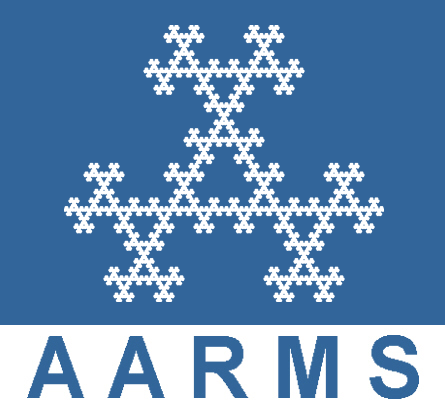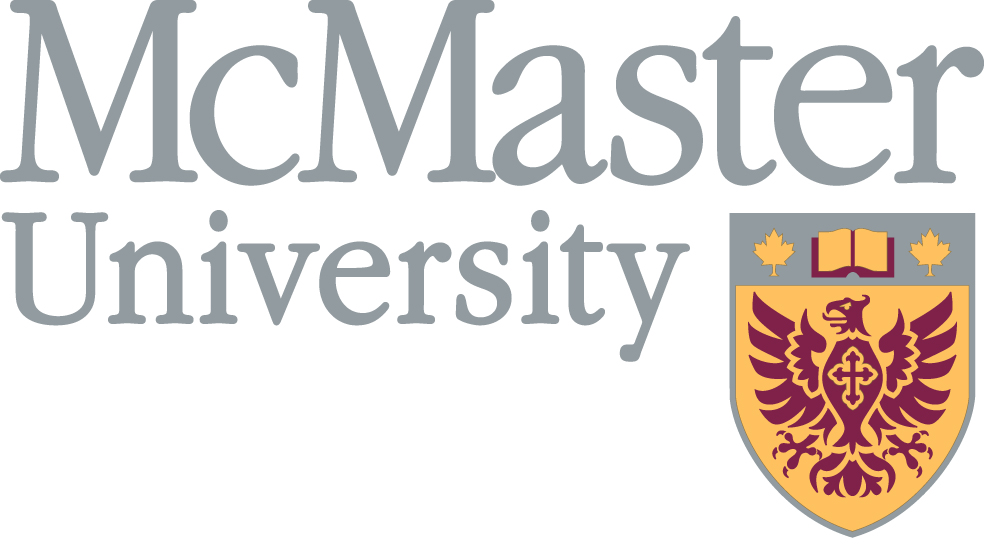Réunion d'hiver SMC 2016
Niagara Falls, 2 - 5 décembre 2016
Org: Maxime Fortier Bourque (University of Toronto) et Malik Younsi (Stony Brook University)
[PDF]
- ILIA BINDER, University of Toronto
The Exploration process for critical percolation converges to SLE$_6$ polynomially fast. [PDF]
-
We discuss the rate of convergence of the exploration process for critical percolation to SLE$_6$. Essentially, it is a conditional result: as soon as a convergence itself is established for a percolation model, the power rate of convergence holds. So far, the result is unconditional for critical site percolation on hexagonal lattice and for some of its generalizations. I will emphasise the Complex Analytical ingredients of the proof. The talk is based on joint projects with Lincoln Chayes (UCLA), Helen Lei, and Larissa Richards (Toronto).
- MAXIME FORTIER BOURQUE, University of Toronto
The Teichmuller space of conformal pentagons [PDF]
-
I will discuss about the space of Jordan domains with 5 points marked along their boundary up to conformal equivalence. The Teichmuller metric on this space is complete and uniquely geodesic, yet its balls are not necessarily convex. However, the space is exhausted by compact convex sets. In particular, the convex hull of any finite set is compact. Whether this holds for Teichmuller spaces in general is an open question of H. Masur.
- RAPHAËL CLOUÂTRE, University of Manitoba
Ideals and zero sets for multipliers on the ball [PDF]
-
We study the closed ideals of an algebra of holomorphic functions on the unit ball, namely the multiplier algebra $\mathcal{A}_d$ of the Drury-Arveson space. Using a recent description of the dual space of $\mathcal{A}_d$, we shed some light on the structure of ideals and give an analogue of classical results of Carleson-Rudin and Hedenmalm on the ball algebra. Deeply intertwined with ideals are zero sets of multipliers. We show how a zero set being small with respect to $\mathcal{A}_d$ reveals a close relationship between the associated ideal and its closure in some weak topology. In general, determining the size of a zero set on the sphere is quite difficult, and we explain how our results may give a new perspective on an old unresolved question of Rudin. This is joint work with Ken Davidson.
- RICHARD FOURNIER, Dawson College and CRM
Three polynomial inequalities for the price of one! [PDF]
-
I will exhibit and discuss an interpolation formula which contains in a rather obvious way the Bernstein inequality for trigonometric polynomials, an improvement of the Bernstein inequality for algebraic polynomials on the unit circle as well as the Duffin-Schaeffer-Markov inequality for polynomials on the unit interval. This follows from joint work with Dimiter Dryanov and Stephan Ruscheweyh.
- HENRI GUENANCIA, Stony Brook University
Multiplier ideal of toric plurisubharmonic functions [PDF]
-
Given a plurisubharmonic function $\varphi$ on the unit polydisk $\mathbb D^n \subset \mathbb C^n$ , a fundamental object attached to $\varphi$ is the so-called multiplier ideal $$\mathcal I(\varphi):=\{f \in \mathcal O(\mathbb D^n);\int_{\mathbb D^n} |f|^2 e^{-\varphi} d\lambda < +\infty\}$$
The goal of the talk is to describe $\mathcal I(\varphi)$ in the case where $\varphi$ is invariant under the natural action of the torus $(\mathbb S^1)^n$; this will require to introduce a Newton convex body attached to any torus invariant psh function generalizing the well-known "algebraic case" when $\varphi= \log \sum_I |z_I|^2$ i.e. when $\varphi$ is the logarithm of the sum of square of (the modulus of) monomials .
- LEONID V. KOVALEV, Syracuse University
Symmetrization and extension of bi-Lipschitz maps [PDF]
-
The Lipschitz extension problem is: given a subset $A$ of a metric space $X$ and a Lipschitz map $f\colon A\to Y$, find a Lipschitz map $F\colon X\to Y$ that agrees with $f$ on $A$. In addition, one may want to have an estimate on the Lipschitz constant of the extended map. And if the original map had a Lipschitz inverse, it is natural to look for $F$ with the same property. I will describe recent progress in this direction, which involves an attempt to transform a simple closed curve on a plane into a centrally symmetric one, while controlling the increase of the Lipschitz constant of its parametrization.
- JAVAD MASHREGHI, Laval University
Approximation via Toeplitz operators [PDF]
-
In several Banach spaces of analytic functions on the open unit disc $\mathbb{D}$, analytic polynomials are dense. The standard technique is to approximate a function $f$ by its dilations $f_r$. The latter is a function which is defined on a disc larger than the open unit disc and thus one expects a better behavior by $f_r$ on $\mathbb{D}$. Therefore, we "expect" to be able to approximate $f_r$ by polynomials on $\mathbb{D}$ and, if $r$ is close enough to one, these polynomials should also be close enough to $f$. This general approach works in many function spaces, e.g., Hardy , Bergman and Dirichlet spaces. However, this method dramatically fails in de Branges-Rovnyak spaces $\mathcal{H}(b)$. But, at the same time, polynomials are still dense in these spaces. The first proof of this fact was non-constructive. Using Toeplitz operators, we provide a new constructive proof.
This is a joint work with O. El-Fallah, E. Fricain, K. Kellay, and T. Ransford.
- THOMAS RANSFORD, Université Laval
Cyclic polynomials on the bidisk [PDF]
-
Let $\mathcal{D}_\alpha$ be the Hilbert space of holomorphic functions $f(z):=\sum_{k\ge0}a_kz^k$ on the unit disk such that $\sum_{k\ge0}(k+1)^\alpha|a_k|^2<\infty$.
It is well known that, if $-\infty<\alpha\le1$, then a polynomial $p(z)$ is cyclic in $\mathcal{D}_\alpha$ (that is, it generates the whole of $\mathcal{D}_\alpha$ as a closed shift-invariant subspace)
iff it has no zeros in the open unit disk; and if $1<\alpha<\infty$, then $p(z)$ is cyclic iff it has no zeros in the closed unit disk.
In this talk, I shall discuss an analogous result for function spaces on the bidisk.
(Joint work with Greg Knese, \L ukasz Kosi\'nski and Alan Sola.)
- TREVOR RICHARDS, Washington and Lee University
The rational conformal modeling question [PDF]
-
For a domain $D\subset\mathbb{C}$ and a meromorphic function $f:D\to\mathbb{C}$, the rational conformal modeling question asks whether there exists an injective analytic map (a conformal map) $\varphi:D\to\mathbb{C}$ and a rational function $R$ such that $f=R\circ\varphi$ on $D$. If $D$ is simply connected, and $f$ is analytic, it is reasonable to expect $R$ to be a polynomial (the polynomial conformal modeling question).
The conformal degree of $f$ on $D$ is the minimal degree of the rational function $R$.
Partial solutions for the polynomial and rational conformal modeling questions will be discussed, with results regarding the conformal degree as well. Of special interest is the case where $D=\mathbb{D}$, the unit disk, and $f$ is a finite Blaschke product. In this case the polynomial conformal modeling question is related to the fingerprint of a polynomial lemniscate. The problem of computing the polynomial conformal model (ie. the function $R$) and the conformal map (ie. the function $\varphi$) for a given finite Blaschke product $f$ will also be discussed.
- ERIC SCHIPPERS, University of Manitoba
Conformal invariants associated with quadratic differentials [PDF]
-
We associate a conformal invariant of nested pairs of simply connected domains to any quadratic differential such that the boundary of the outer domain is a trajectory. The resulting conformal invariants are monotonic, strictly negative, and are zero precisely when the inner domain is the outer domain minus trajectories of the quadratic differential. By choosing various quadratic differentials one obtains various inequalities for bounded univalent functions or domain functions.
The construction is a generalization of a technique of Nehari for extremal problems for families of conformal maps, involving Dirichlet energies of singular harmonic functions.
- DYLAN THURSTON, Indiana University, Bloomington
Degenerating Riemann surfaces and elastic graphs [PDF]
-
We study degenerating families of open Riemann surfaces, and in particular when one degenerating family conformally embeds in another in a given homotopy class. Using a characterization of conformal embeddings via extremal length, we show that, under suitable hypotheses, conformal embedding is captured by suitable \emph{elastic graphs} associated to the degenerations.
- MICHAEL YAMPOLSKY, University of Toronto
Complexity of attractors of real quadratic polynomials [PDF]
-
We construct examples of quadratic maps of the interval with Cantor attractors which are effectively computable, but have arbitrarily high computational complexity. The construction uses tools of parabolic implosion and renormalization. This is a joint work with Cristobal Rojas.
- MALIK YOUNSI, University of Washington
Constructive approximation by Julia sets [PDF]
-
The study of possible shapes of polynomial Julia sets was instigated by Kathryn Lindsey, who proved that any Jordan curve in the plane can be approximated by polynomial Julia sets arbitrarily well in the Hausdorff distance, thereby answering a question of Bill Thurston. In this talk, I will present a constructive proof based on potential theory that any bounded subset of the plane whose interior has connected complement can be approximated in a strong sense by polynomial filled Julia sets. Several illustrative examples will be presented, as well as estimates for the rate of approximation in terms of geometric and potential theoretic quantities. This is joint work with Kathryn Lindsey.
- ANDREW ZIMMER, University of Chicago
Negatively curved metric spaces and several complex variables [PDF]
-
In this talk I will discuss how to use ideas from the theory of metric spaces of negative curvature to understand the behavior of holomorphic maps between bounded domains in complex Euclidean space. Every bounded domain has an metric, called the Kobayashi metric, which is distance non-increasing with respect to holomorphic maps. Moreover, this metric often satisfies well-known negative curvature type conditions (for instance, Gromov hyperbolicity or visibility) and one can then use this negative curvature to understand the behavior of holomorphic maps. Some of what I will talk about is joint work with Gautam Bharali.





